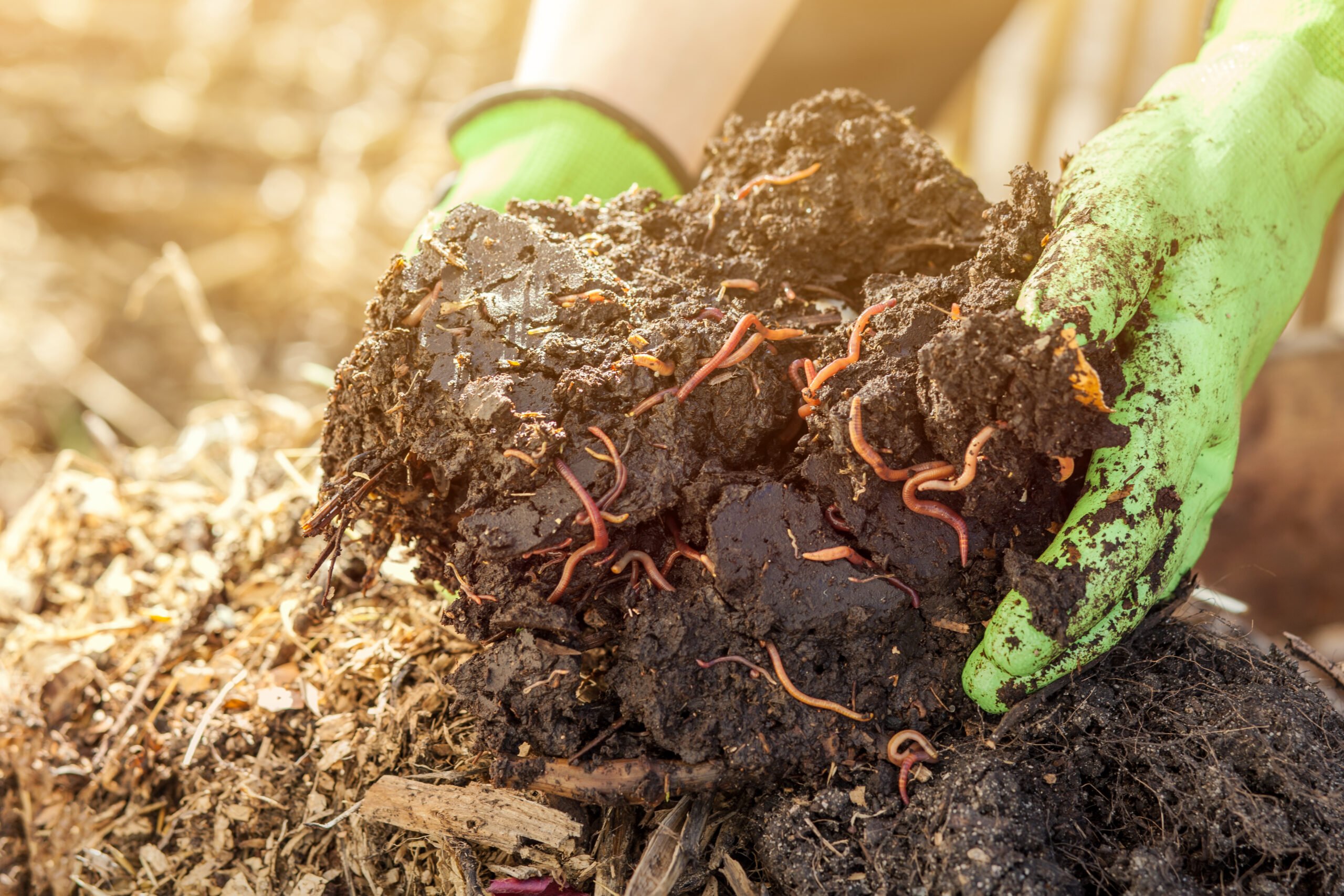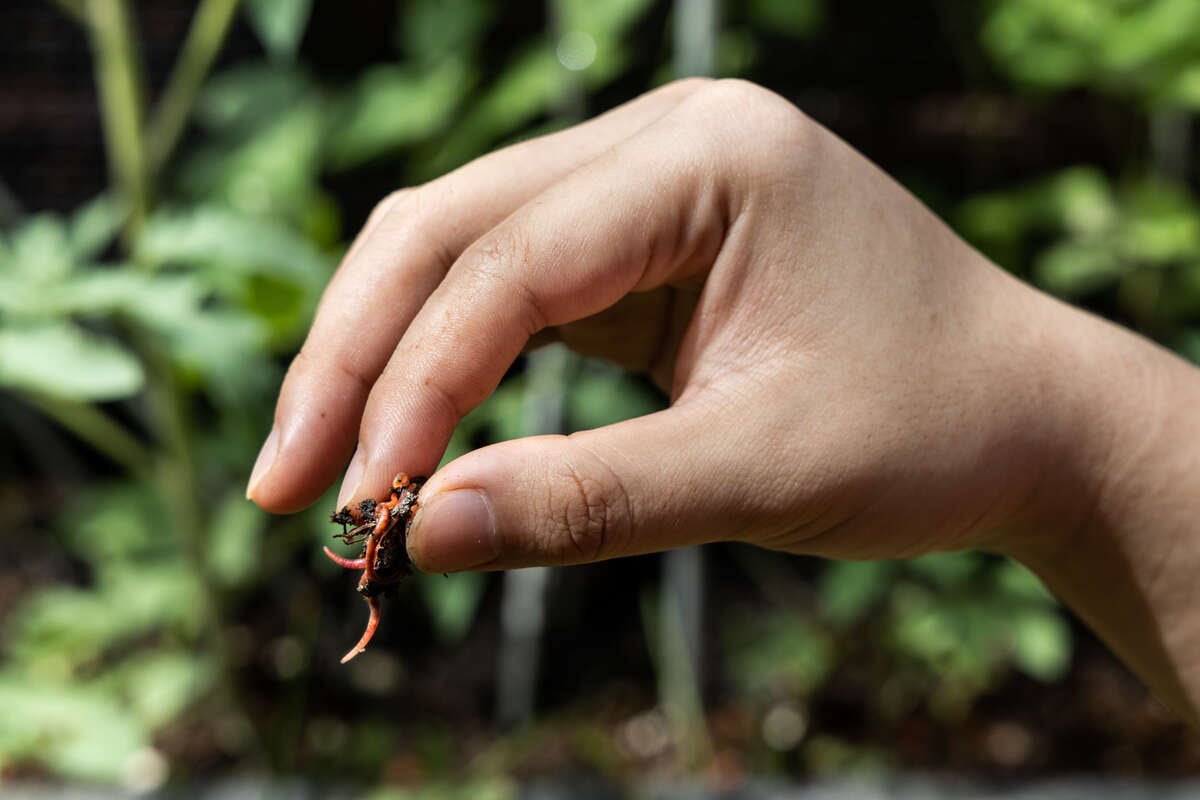 Have you ever marveled at the lush, vibrant beauty of a well-maintained garden or the rich harvest of a crop? You may not have realized that beneath the surface, a tiny, slimy hero plays a significant role – the humble earthworm. These wriggly wonders create a natural treasure known as worm castings, and in this deep dive, we will uncover the mysteries of this remarkable resource.
Have you ever marveled at the lush, vibrant beauty of a well-maintained garden or the rich harvest of a crop? You may not have realized that beneath the surface, a tiny, slimy hero plays a significant role – the humble earthworm. These wriggly wonders create a natural treasure known as worm castings, and in this deep dive, we will uncover the mysteries of this remarkable resource.
We’ll journey through the world of worm castings, exploring how they’re made, discovering their benefits for soil and plants, and even learning how to unleash their magic in your garden.
Let’s dig in!
What Are Worm Castings?
Worm castings are the excrement earthworms produce as they digest organic matter in their digestive tracts. Essentially, worm castings are the end product of an earthworm’s journey through decaying leaves, food scraps, and other organic material found in the soil.
But why are these worm droppings so special? It turns out that the digestive process of earthworms transforms organic matter into a nutrient-packed, plant-friendly form. As the organic material passes through the earthworm’s digestive tract, it undergoes a magical transformation, turning into a substance that’s a gourmet meal for your plants.
How Are Worm Castings Made?
Worm castings result from an orchestrated dance between earthworms and organic matter. Earthworms munch on organic material such as dead leaves, kitchen scraps, and yard waste. As they feast on this organic buffet, the material travels through their digestive tracts, broken down and enriched with beneficial microorganisms. These microbes play a vital role in transforming organic matter into a form that plants quickly absorb.
After their feast, the earthworms excrete the transformed material into tiny, nutrient-rich pellets – these are the coveted worm castings. These castings are teeming with beneficial microorganisms, plant growth hormones, essential nutrients, and humic acids, making them a powerhouse of goodness for your garden.
Why Are Worm Castings Good for Plants and Soil?
Now that we’ve uncovered the secret recipe behind worm castings, it’s time to explore their benefits for your garden. Worm castings aren’t just your run-of-the-mill soil amendment; they are a magic elixir that can transform your garden into a lush paradise. Let’s take a closer look at the incredible benefits they offer.
Soil benefits of worm castings include:
- Improved Soil Structure: Worm castings improve soil by allowing air and water to penetrate, which helps roots grow better.
- Enhanced Soil Fertility: Forget the fast-food fertilizers; worm castings are rich in organic matter and serve up a slow-cooked feast of nutrients to your plants.
- Boosted Microbial Population: They provide a rich source of organic matter and nutrients, creating an ideal environment for diverse and thriving microbial communities in the soil.
- Natural Disease Suppression: Worm castings come equipped with a superhero enzyme called chitinase. It’s ready to fend off certain plant diseases and keep your greens healthy and thriving.
- Improved Water Retention: Castings enhance the soil’s water-holding capacity, ensuring your plants stay hydrated even during those pesky dry spells. It’s like having a built-in hydration system for your garden.
While the benefits of worm castings on plants are:
- Quicker Seedling Growth: Worm castings are like turbo boosters for your seeds. They kickstart germination and nurture robust, healthy seedlings, making your garden dreams come true faster than you can say ‘green thumb.’

- Stronger Root Growth: Nutrient-rich and nurturing, they promote vigorous root development, anchoring your plants firmly and helping them drink water and nutrients like champs.
- Improved Pathogen Suppression: Worm castings are your secret allies in the battle against plant diseases. Packed with beneficial microbes, they wage war against harmful pathogens, reducing the risk of your precious plants falling ill.
- Improved Pest Suppression: Worm castings aren’t just defenders against diseases but the garden’s natural bouncers. Certain compounds in castings act as deterrents, keeping unwanted pests from crashing your garden party.
- Higher Yield: Get ready for a garden party of a different kind – a harvest feast! Worm castings provide plants with the essential nutrients they crave, leading to robust growth and abundant yields that’ll have you swimming in veggies.
- Better Pollination: Healthy, well-fed plants are like magnets for pollinators. Bees and butterflies can’t resist the allure of a thriving garden. Expect better pollination and a fruit bonanza that’ll make your garden the talk of the town.
How to Use Worm Castings in Your Garden?
Whether growing vegetables, herbs, flowers, or a lush lawn, worm castings can play a vital role in your garden’s success. Let’s see how you can apply them.
1. Germinating Seeds
Studies have shown that the magic happens faster when that seed is planted in soil sprinkled with a touch of vermicompost. It’s like adding a little extra spice to your favorite recipe; that pinch of vermicompost gives your seedlings the boost they need. So, when nurturing your baby plants, remember that just a sprinkle of vermicompost can make all the difference.
2. Transplants
When it comes to seedling transplants, restraint is the name of the game. As you move your seedlings into the garden, a modest 1-2 teaspoons of worm castings per planting hole will do the trick.
You can get more generous for the mature transplants. Providing about 1/2 to 1 cup of worm castings per hole can significantly reduce transplant stress and expedite root establishment. So, remember, a measured approach can help your plants thrive.
3. Established Plants
You’ll typically want to add a modest 1 to 2 cups of worm castings when it comes to established plants. Alternatively, some experts suggest a guideline of 1/4 cup for every 6-inch diameter of your plant’s growing area. The goal is to provide your green companions with the nutrients they crave.
Now, for the application process, let’s get practical. When using worm castings as a top dressing, lay it on the soil surface and give it a gentle scratch to ensure those valuable nutrients get closer to the root zone.
Here’s the science bit: UV light is the arch-nemesis of the precious microbes in vermicompost. Work the worm castings into the soil to safeguard those microbe superheroes rather than leave them on top.
4. Lawns and Turf
You can give your lawn some love by spreading worm castings evenly across the grass, but directly dousing your lawn with worm castings can feel like a money pit, right? So, here’s a budget-friendly idea: consider worm tea. Think of it as a savvy investment – your turf gets the benefits without draining your wallet dry. Remember, a thriving lawn doesn’t have to mean empty pockets.
5. Worm Tea
While worm castings can be a precious commodity, there’s a savvy trick to stretch them further: enter worm tea. This brew, often known as actively aerated compost tea, is the secret sauce for your garden.
Here’s how the magic happens: worm castings are placed in a tightly woven mesh bag, suspended in water, and left to brew for 24-48 hours. During this time, the water is agitated to introduce oxygen, which serves as a feast for the microbes living in those castings.
But we don’t stop there! We often throw in some alfalfa, kelp meal, or fish hydrolysate to supercharge the microbe population. Molasses can join the party, too, but be cautious; it can cause a short-term microbial explosion followed by a decline.
Once the worm tea is ready, it’s time for action. Depending on your garden’s needs, you can apply it as a foliar spray or a root drench. And remember, actively aerated tea should be used within a few hours after brewing for maximum effectiveness. It’s like serving a fresh-baked pie right out of the oven—best enjoyed while piping hot!
How to Judge The Quality of Worm Casting?
Not all worm castings are cut from the same cloth. When you’re on the quest for the finest fertilizer for your garden, here’s the lowdown on what to look for:
- Color: Look for castings that are dark brown or black. This indicates they’re packed with nutrients.
- Texture: High-quality castings should have a fine, crumbly texture similar to coffee grounds or loose, fluffy soil.
- Smell Test: Quality castings should have an earthy, pleasant smell. If they smell off, it might be a red flag.
- Moisture: They should feel moist but not overly wet or dry, similar to damp soil.
- Purity: Ensure they’re free of debris like sticks or rocks. You want them pure and uniform.
- Wormy Activity: Finding live worms or worm cocoons occasionally shows fresh and active castings.
- Nutrient Nuggets: Worm castings are nutrient-rich. You can test nutrient levels, but healthy plants are the ultimate proof.
- Solubility Spell: Perform a simple test by mixing a small amount of worm castings with water and observing if it dissolves quickly. High-quality castings should readily dissolve and create a nutrient-rich solution.
- Plant Power: Ultimately, watch your plants – healthy growth, improved soil, and pest resistance tell you the real story.
- Trust the Source: Choose a reputable supplier for peace of mind.
Let Your Garden Thrive: The Wonderful World of Worm Castings
 Worm castings are a testament to the power of organic matter, beneficial microbes, and the magic that happens in earthworms’ digestive tracts. By incorporating worm castings into your gardening routine, you’re feeding your plants and nourishing the soil, creating a healthier and more resilient garden ecosystem.
Worm castings are a testament to the power of organic matter, beneficial microbes, and the magic that happens in earthworms’ digestive tracts. By incorporating worm castings into your gardening routine, you’re feeding your plants and nourishing the soil, creating a healthier and more resilient garden ecosystem.
So, why opt for synthetic fertilizers that harm your soil and plant health when you can choose organic, nutrient-packed worm castings? It’s time to embrace the wisdom of these underground heroes and let your garden flourish in the lap of natural abundance.
Happy gardening!
Got More Questions on Worm Castings?
Go through our FAQ section to find answers to more dilemmas related to worm castings!
1. How should I store worm castings?
To maintain their quality, store worm castings shielded from direct sunlight and make sure they stay moist. Placing a moist cloth on top of an uncovered bin is an effective method for preserving moisture.
2. Are worm castings high in nitrogen?
Yes, worm castings are relatively high in nitrogen, but don’t worry, this won’t harm your plants! It’s a crucial nutrient for plant growth.
3. Are worm castings safe for use in organic gardening?
Yes, worm castings are an excellent choice for organic gardening. They are a natural and organic soil amendment rich in nutrients, making them safe and beneficial for organic gardening practices.
4. Can worm castings go bad?
Worm castings do not go wrong but can develop mold or undesirable microbial growth if they become overly wet. Proper storage in a dry environment is essential.
5. How much worm castings do you need to add to the soil?
This varies by application. Worm castings and potting soil should typically be combined in a ratio of 1:3 or 1:4 when potting plants. (one part worm castings to three or four parts soil). Always follow product packaging application guidelines or consult an expert for precise recommendations.








